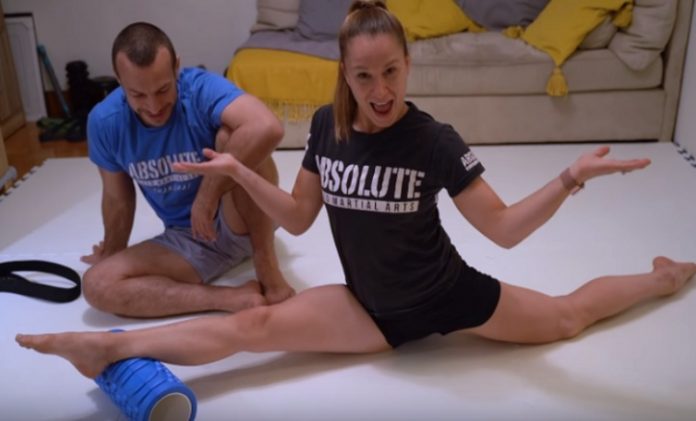
Finally, let’s end our BJJ home workout series with something that is actually the easiest to train, but will yield immense benefits to grapplers. Jiu-Jitsu flexibility training is something we often take for granted, and we then complain about how brittle we are. Of course, some people just have that freaky flexibility that is unattainable for the rest of us. While you won’t get Eddie Bravo flexible with our home flexibility workouts, you’ll certainly be able to do things you couldn’t before, Not just that, but you’ll also correct some imbalances in your body and become more agile all over the board.
Jiu-JItsu flexibility training, in most people’s minds, is just stretching. However, stretching does not mean you’ll become more flexible. Moreover, there are certain body parts that you can’t make flexible any matte how you try. On the same note, there are body parts, like the hips and shoulder, for example, that are important to be flexible in BJJ, as opposed to other body parts. There are plenty of pieces to the flexibility and mobility puzzle. However, begin stuck at home, isn’t this the perfect time to put in some flexibility work? After all, even if you don’t turn into rubber by the time isolation ends, at least you’ll help all your nagging injuries heal.
Who Needs To Be Flexible For BJJ?
Everyone. Flexibility is huge in BJJ. Sure, you can do without it, but it does help. A lot. Actually, there is no good reason I can think of not to look at flexibility as an asset in JIu-Jitsu. However, we need to look at flexibility as a whole. Most grapplers think of flexible hips that help prevent most guard passes as flexibility. While hip flexibility is certainly important, it is also one of the qualities that are most easily trainable.
When it comes to grappling flexibility, it is important o develop overall limberness. It is not just about preventing the odd guard pas or two. It will help you get out of submissions, it will allow you to figure out scrambles and it will help you do attacks of your own. Yeah, you can use flexibility in an inoffensive manner as well. How many submissions require you to hold on to a body part to of yours in order to finish? Try doing a D’arce choke with inflexible wrists, for example. Even guard passing with a pair of flexible knees and even feet becomes a much easier task compared to having stiff legs.
Also, a word on mobility. This is often included along with flexibility but doesn’t get the recognition it needs. Mobility is far more than being elastic and having the ability to do impressively deep stretches. When it comes to Jiu-Jitsu flexibility, you need to be able to have a full range of motion on every joint, if you want tendon elasticity to have any effect on your Jiu-Jitsu game. Oh, and let’s not forgotten the muscles and all the tight spots that need breaking up in there.
Bodyweight Jiu-Jitsu Flexibility Training
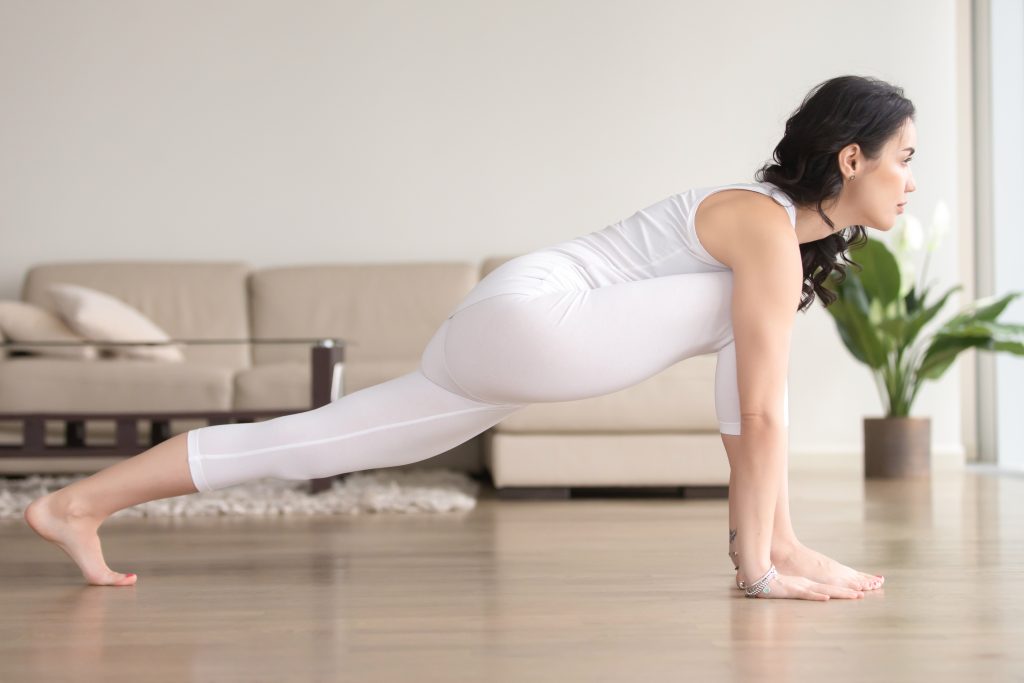
When it comes to choosing the perfect Yoga routine for BJJ, there’s no such thing. Yoga is extremely diverse and comes in many forms and styles. While the best way to learn what you need would be to consult a Yoga instructor, that’s out of the question for now. Apart from some DVD options that offer specific Yoga for Jiu-Jisu flexibility, you also have interesting options on YouTube as well.
The trick is trying to do a certain workout before you judge how easy or hard it is. Trust me, most of the things that seem like a breeze to you will actually give a run for your money. Also, make sure you target the body parts you want to make more flexible, as well as those you need to use in BJJ the most. In other words, hips, shoulders, wrists, feet, and neck should be your focus points.
A Yoga routine will provide you with a flow that lasts anywhere from 10 minutes to a couple of hours. It also comes with breathing patterns and might be difficult to follow if you’re in a downward dog and can’t see your screen for the instructions. In cases where you’re not convinced by Yoga, specific stretching is always a good idea. Hip flexors should be the focus here, and there is plenty of BJJ specific motion that will help you develop insane hip flexibility. Check out this article for some ideas for hip mobility, as well as this one for developing overall BJJ flexibility.
Training Mobility And Flexibility With Minimal Equipment
Of course, when you have equipment you have the choice of combining or alternating Jiu-Jitsu flexibility workouts with no equipment, like Yoga, with those that require some gear. And while flexibility doesn’t require a lot of gear, you can actually do wonders for your mobility if you have aces to certain pieces of equipment
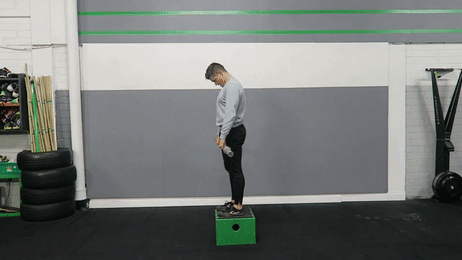
Also, let’s not forget about foam rolling and SMR (Self Myofascial Release). IF you have a foam roller, you’re pretty much set to give your entire body a deep tissue massage. Check out some routine ideas here. If you haven’t got aces toa foam roller a tennis ball will do the trick. Or you can make your own out of a PVC pipe and a yoga mat or something similar in texture. Once you try SMR though, ll your nagging injuries will start disappearing like magic. Thre’s hardly a better way to get into BJJ shape before getting back on the mats which has to be sometime soon.
Closing Thoughts
Jiu-Jitsu flexibility training at home might seem like te easier part of our BJJ home workout series. It is not. While most grapplers are already good at BJJ (obviously) as well las have solid levels of cardio and strength, they all lack in certain areas of flexibility and or/mobility. This is actually the most important aspect fo BJJ training you can do while stuck at home due to COVID-19.


![Darce Choke Encyclopedia – Origins, Mechanics and Variations [2024] BJJ, choke, Brabo, BJJ Darce Choke, D'arce Choke, Darce BJJ Choke](https://bjj-world.com/wp-content/uploads/2017/11/JungPoirierLeeYahoo-218x150.jpg)






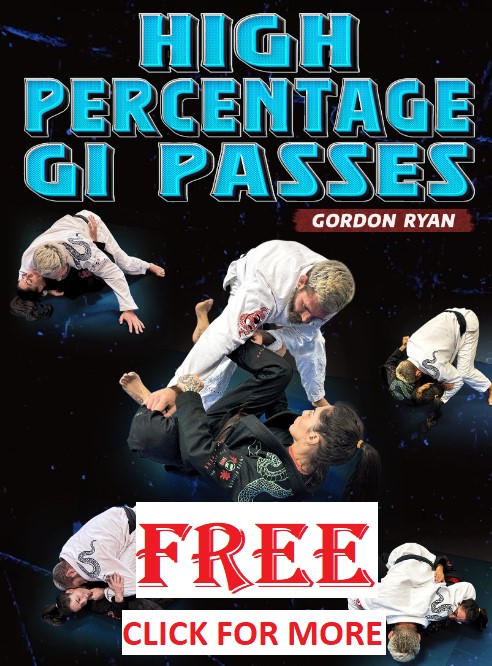


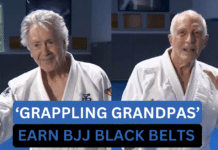
![Best Marcelo Garcia Techniques by Team Marcelo Garcia DVD Review [2025] Best Marcelo Garcia Techniques by Team Marcelo Garcia DVD Review](https://bjj-world.com/wp-content/uploads/2025/02/best-marcelo-garcia-techniques-dvd-review-218x150.png)
![Forging The De La Riva Guard Giancarlo Bodoni DVD Review [2025]](https://bjj-world.com/wp-content/uploads/2025/02/de-la-riva-guard-giancarlo-bodoni-dvd-review-218x150.png)

![Breaking Their Guard Mikey Musumeci DVD Review [2025] Breaking Their Guard Mikey Musumeci DVD Review](https://bjj-world.com/wp-content/uploads/2025/02/breaking-their-guard-mikey-musumeci-dvd-review-218x150.png)

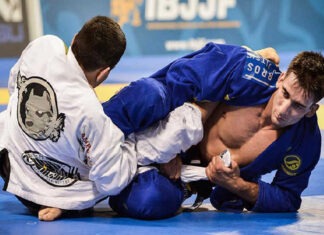
![Feet Finder Foot Sweeps Christian Ozbek DVD Review [2024] Feet Finder Foot Sweeps Christian Ozbek DVD Review](https://bjj-world.com/wp-content/uploads/2024/09/feet-finder-foot-sweeps-christian-ozbek-dvd-review-100x70.png)
![Kill The Underhook Dima Murovanni DVD Review [2024] Kill The Underhook Dima Murovanni DVD Review](https://bjj-world.com/wp-content/uploads/2024/10/kill-the-underhook-dima-murovanni-dvd-review-100x70.png)


![Jeff Glover DVD Bundle Review: Chokin’ Around With Uncle Jeff [2024] Jeff Glover DVD Bundle Review: Chokin' Around With Uncle Jeff](https://bjj-world.com/wp-content/uploads/2024/10/jeff-glover-dvd-bundle-review-chokin-around-100x70.png)
![Zen Guide To Submission Grappling Margot Ciccarelli DVD Review [2025] Zen Guide To Submission Grappling Margot Ciccarelli DVD Review](https://bjj-world.com/wp-content/uploads/2025/02/submission-grappling-margot-ciccarelli-dvd-preview-100x70.png)
![Top Half Guard Neil Melanson DVD Review [2025] Top Half Guard Neil Melanson DVD Review](https://bjj-world.com/wp-content/uploads/2025/02/top-half-guard-neil-melanson-dvd-review-100x70.png)





![Bricks Kesa Gatame System Jeremy Brick DVD Review [2025] Bricks Kesa Gatame System Jeremy Brick DVD Review](https://bjj-world.com/wp-content/uploads/2025/02/bricks-kesa-gatame-system-jeremy-brick-dvd-review-100x70.png)




![Best Marcelo Garcia Techniques by Team Marcelo Garcia DVD Review [2025] Best Marcelo Garcia Techniques by Team Marcelo Garcia DVD Review](https://bjj-world.com/wp-content/uploads/2025/02/best-marcelo-garcia-techniques-dvd-review-100x70.png)



![Power Passing Body Locks Dan Manasoiu DVD Review [2025] Power Passing Body Locks Dan Manasoiu DVD Review](https://bjj-world.com/wp-content/uploads/2025/01/power-passing-body-locks-dan-manasoiu-dvd-review-100x70.png)
![Efficiently Executing X-Guard Giancarlo Bodoni DVD Review [2024] Efficiently Executing X-Guard Giancarlo Bodoni DVD Review](https://bjj-world.com/wp-content/uploads/2024/09/efficiently-executing-x-guard-giancarlo-bodoni-dvd-REVIEW-100x70.png)

![Grappling Takedown Dominance Brandon Ruiz DVD Review [2025] Grappling Takedown Dominance Brandon Ruiz DVD Review](https://bjj-world.com/wp-content/uploads/2025/01/grappling-takedown-dominance-brandon-ruiz-dvd-review-100x70.png)
![Tricks for Unstoppable Takedowns Georges St Pierre DVD Review [2024] Tricks for Unstoppable Takedowns Georges St Pierre DVD Review](https://bjj-world.com/wp-content/uploads/2024/12/unstoppable-takedowns-georges-st-pierre-dvd-review-100x70.png)

